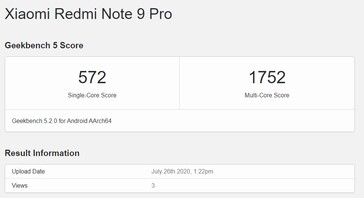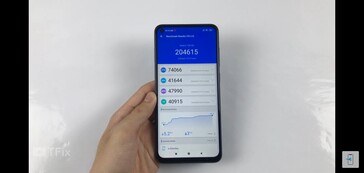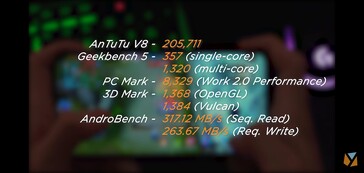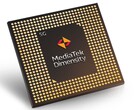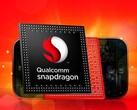Previously, we looked at what performance gaps existed between the Redmi Note 8 and Redmi Note 9, as well as their corresponding Pro siblings. It's great to compare across generations, but how does the Redmi Note 9 perform when pitted against the more expensive Redmi Note 9 Pro? While buyers can't quite spec the Redmi Note 9 to be the same as the Redmi Note 9 Pro, the two closest SKUs of the phone are priced about US$20 apart.
What does US$20 extra get you in terms of pure performance?
Starting off with Geekbench, the Redmi Note 9 Pro earns a single-core score of 572. Comparatively, the Redmi Note 9 comes away with a score of 357. That's a hefty 60% advantage to the Redmi Note 9 Pro, and the Pro device flexes its muscles right off the bat.
That continues in the multi-core category, with the Redmi Note 9 Pro recording a score of 1752. The regular Redmi Note 9 makes do with a score of 1320. That translates into a 32% advantage for the Redmi Note 9 Pro.
This CPU dominance continues even further on AnTuTu. There, the Redmi Note 9 Pro records a score of 101,019. The Redmi Note 9, on the other hand, is only able to muster a score of 74,066. That's a 36% jump in power between the Redmi Note 9 and Redmi Note 9 Pro. It's safe to say that the Snapdragon 720G offers about 40% better CPU performance than the Helio G85.
How are things on the GPU end? Well, while we don't have 3DMark scores for the Redmi Note 9 at the moment, but AnTuTu has proven a decent alternative. On AnTuTu's GPU test, the Redmi Note 9 Pro earns a score of 71,571. The regular Redmi Note 9? 41,644. Again, the Snapdragon 720G absolutely decimates the Helio G85, showing a 72% advantage in the GPU department.
So, what does US$20 more get you? A lot more, apparently. It's also important to note that the regular Redmi Note 9, by most indications, does not appear to offer UFS storage. The Redmi Note 9 Pro features UFS 2.1 storage. Storage speed is a big factor in day-to-day performance. There's no doubt that the Redmi Note 9 Pro is by far the better performer—power users and gamers would be best served ponying up the extra money for the Pro model.






